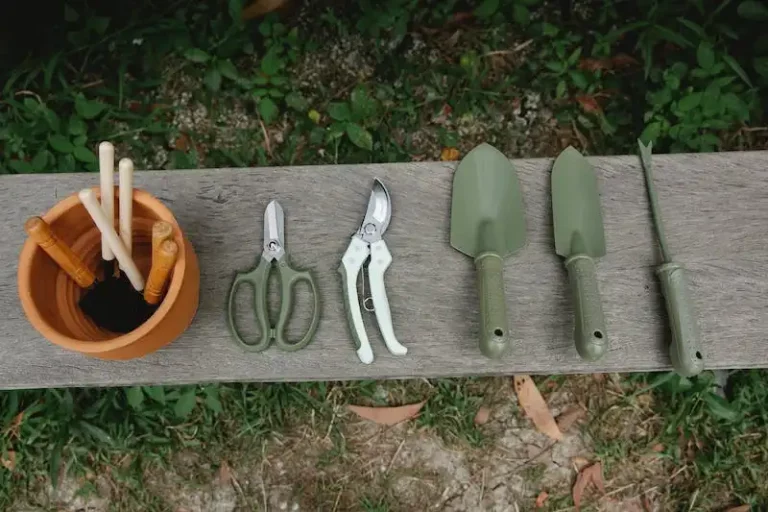Welcome to our expert guide on how to grow cumin! If you’re a passionate gardener, please read on. Cumin is a versatile and highly popular spice, so growing your own cumin plants can be a rewarding experience. With a little care and attention, you can soon have your own fresh cumin at hand.
Cumin plants thrive in warm climates, so it’s important to select a suitable location. They need full sun and well-drained soils to grow well. Cumin plants are tolerant of a wide range of soil types, but they prefer slightly alkaline soil with a pH between 6.8 and 7.5.
When it comes to planting, cumin seeds should be sown directly into the soil. You can start them indoors if you’re in a colder climate, but they don’t transplant well due to their long taproot. Plant the seeds about 1/4 inch deep and 6 inches apart. Keep the soil moist, but be careful not to overwater, as cumin plants do not tolerate excessive humidity.
Cumin plants are low-maintenance and don’t require much fertilizer. A balanced fertilizer applied once a month during the growing period is usually sufficient. Additionally, make sure to thin out the seedlings as they grow to allow for proper air circulation and discourage weeds.
As the plants mature, you’ll notice their unique and distinct aroma. The small pink flowers eventually give way to seed capsules, which are ready to be harvested when they turn brown. When the majority of the capsules have turned brown, you’re ready to harvest your cumin.
Harvesting cumin can be a time-consuming process, but the effort is well worth it. Cut the stems close to ground level and then hang them upside down in a well-ventilated area. The capsules will naturally dry and release their seedlike fruits. After a few weeks, you can thresh the plants to separate the seeds from the debris.
Once the cumin seeds have been harvested and cleaned, you can store them in a cool, dry place. It’s best to store them in an airtight container, such as a glass jar or a biodegradable bag, to preserve their flavor and aroma.
If you have any questions about growing cumin, please don’t hesitate to ask us. We’re here to help you learn more about this fascinating plant and provide you with helpful tips and articles to ensure your cumin-growing journey is successful.
How to Plant and Grow Cumin
Cumin is a popular spice that is commonly used in various cuisines around the world. If you’re interested in growing your own cumin plants and enjoying the fresh flavor of this herb in your dishes, then this beginner’s guide is for you. Here’s what you need to know about planting and growing cumin:
1. Start with high-quality seeds: Cumin seeds can be found in most garden centers and online seed stores. Make sure to buy seeds from a reputable source to ensure good germination and avoid contaminated seeds.
2. Plant in well-drained soil: Cumin plants prefer well-drained soil with a pH range of 6.0 to 7.5. Prepare the soil by removing any weeds and loosening it with a garden fork or tiller. Cumin plants also require full sun, so choose a location that receives at least 6 hours of direct sunlight daily.
3. Sow the seeds: Cumin seeds are small and slender, so be careful while sowing them. You can sow the seeds directly in the soil or start them indoors in biodegradable pots. Plant the seeds about 1/4 inch deep and space them around 6 inches apart.
4. Provide the right conditions: Cumin plants are quite hardy and can tolerate a wide range of climates. However, they do best in warm weather with temperatures between 75°F and 85°F. Water the plants regularly, especially during dry spells, but avoid overwatering as cumin plants don’t like soggy soil.
5. Care for the plants: Cumin plants require minimal care. Remove any weeds that compete with the plants for nutrients and water. You can also provide a balanced fertilizer once a month to promote healthy growth. Cumin plants don’t require much pruning, but you can trim them if necessary to maintain their shape.
6. Harvest at the right time: Cumin plants take around 4 to 5 months to reach maturity. You can harvest the fruits when they turn brown and start to split. To avoid losing seeds, harvest the plants in the morning after the dew has dried. Hang the plants upside down in a well-ventilated area to dry, then thresh the fruits to separate the seeds.
7. Troubleshooting: If you have any questions or encounter issues while growing cumin, refer to gardening articles or consult a gardening expert for advice. Some common problems include fusarium wilt, powdery mildew, and physical damage from pests. Take the necessary steps to protect your plants and address any issues promptly.
Growing your own cumin can be a rewarding experience. Not only will you have a fresh supply of this versatile herb for seasoning your dishes, but you’ll also enjoy the delight of watching the plants grow. Follow this guide, take good care of your cumin plants, and enjoy the many uses and flavors of this wonderful herb.
Cumin Overview
Cumin is a popular spice that is craves over the world for its distinct flavor and aroma. It belongs to the parsley family and is native to the Mediterranean and Southwest Asia. Cumin seeds are widely used in various cuisines and can be found in many spice mixes.
When it comes to growing cumin, there are a few key factors to consider. Cumin plants prefer well-draining soil with a pH range of 6.0 to 7.0. They require full sun and can tolerate a wide range of temperatures. Cumin seeds have a hardiness zone of 5-10, making them suitable for many regions.
Cultivating cumin from seed is the usual method for beginners as it is relatively easy to grow. The germination of cumin seeds can take around 7 to 14 days, depending on the conditions. To ensure optimum growth, it is recommended to start the seeds indoors about 4-6 weeks before the last frost.
After germination, it is necessary to move the cumin plants outdoors to a sunny location. Cumin requires about 120 days from planting to maturity, so patience is key. Regular watering, weeding, and pruning can help to ensure that the plant stays healthy and produces a good harvest.
Cumin plants can grow up to 2 feet in height and have slender leaves. They produce small white or pink flowers that eventually develop into seedlike fruits. To harvest cumin, wait until the fruits turn brown and begin to wilt. At this point, you can remove the fruits from the plant and allow them to dry in a cool, dry, and airtight place.
When it comes to pest and disease problems, cumin is relatively resistant. However, it can still be affected by diseases such as Alternaria leaf spot and pests like aphids and spider mites. Keeping the plants clean and free from debris can help prevent these issues.
In conclusion, growing cumin can be a rewarding experience for beginners and experienced gardeners alike. With the right care and attention, you can enjoy the fresh aroma and flavor of homegrown cumin in your culinary creations. If you have any questions or need further assistance, many gardening resources like Healthline, WebMD, and gardening forums are available to provide tips and troubleshooting information.
Where to Plant Cumin
When it comes to planting cumin, location is key. Cumin plants thrive in warm climates and require full sun to grow properly. They are typically planted outdoors, although they can also be grown indoors if the necessary conditions are provided.
Before planting cumin seeds, it is important to consider the temperature requirements of the plant. Cumin prefers a temperature range of 68 to 95 degrees Fahrenheit (20 to 35 degrees Celsius). If the temperature drops below 50 degrees Fahrenheit (10 degrees Celsius), cumin plants may become stunted and not grow to their full potential.
In addition to temperature, cumin plants also have specific soil requirements. They prefer well-drained soil that is rich in organic matter. Before planting, make sure the soil is loose and free from debris. It is also important to ensure the soil is slightly acidic, with a pH level between 6.8 and 7.5.
Cumin plants should be watered well before planting, as they require a moist environment to germinate. However, overly wet conditions can lead to root rot, so be careful not to overwater. Once the plants are established, they should be watered regularly, about once a week or whenever the soil feels dry to the touch.
Cumin plants are relatively low maintenance and do not require much fertilizer. A general-purpose fertilizer can be applied once a month during the growing season to provide essential nutrients. However, be cautious not to over-fertilize, as this can lead to excessive foliage growth and diminish the flavor and aroma of the cumin seeds.
If you’re growing cumin indoors, consider providing adequate lighting. Cumin plants need at least 14 to 16 hours of fluorescent lighting per day to mimic natural sunlight. Make sure the light is evenly distributed over the plants to promote even growth.
Cumin plants can be susceptible to certain diseases and pests. Fusarium and Alternaria are two common diseases that can affect cumin plants. To prevent these diseases, avoid planting cumin in areas where other susceptible plants have recently grown. Additionally, keep an eye out for ants, as they can harm the plant by feeding on the stem and causing wilt.
Overall, cumin plants are a rewarding addition to any herb garden. Understanding their specific planting requirements is essential for successful growth and a bountiful harvest.

